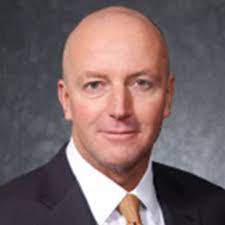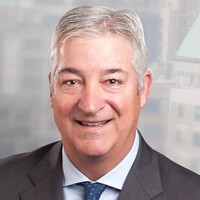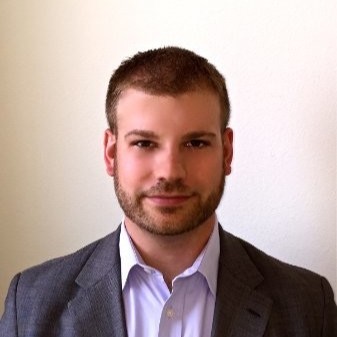- Video Library
- Medtech M&A and Deal-Making Perspectives
Medtech M&A and Deal-Making Perspectives


John Babitt
John is a Life Sciences Partner at EY with almost 30 years of experience, all in the life science and healthcare industry.
John advises both strategic and private equity life science clients on various projects including M&A, Supply Chain, IT, Financial/Accounting and Tax considerations. John has extensive experience across all sectors of life sciences with a focus on medical technology.
John has also served as a CFO of a publicly traded medical technology company.
John Babitt
John is a Life Sciences Partner at EY with almost 30 years of experience, all in the life science and healthcare industry.
John advises both strategic and private equity life science clients on various projects including M&A, Supply Chain, IT, Financial/Accounting and Tax considerations. John has extensive experience across all sectors of life sciences with a focus on medical technology.
John has also served as a CFO of a publicly traded medical technology company.


Michael Robinson
Bio coming soon.
Michael Robinson
Bio coming soon.


Matthew Schopp
Collaborative leader known for results-driven, hands-on business partnership and problem solving. Strategic thinker with a passion for utilizing strong analytical skills to challenge and improve the status quo, and a track record of delivering results with integrity and an attention to detail. Highly accomplished professional with experience in driving strategic top-line growth and profitability.
Matthew's professional experiences include work in business development and M&A, corporate finance, valuation and modeling, market strategy, tax strategy and planning, and equity research.
Specialties: M&A Experience; M&A Due Diligence; Strategic Planning; Business Strategy; Financial Modeling; Capital IQ; Microsoft Office: Word, PowerPoint, Excel, Visio, Access; Cognos; SAP; Corptax; Accounting; Financial Analysis
Matthew Schopp
Collaborative leader known for results-driven, hands-on business partnership and problem solving. Strategic thinker with a passion for utilizing strong analytical skills to challenge and improve the status quo, and a track record of delivering results with integrity and an attention to detail. Highly accomplished professional with experience in driving strategic top-line growth and profitability.
Matthew's professional experiences include work in business development and M&A, corporate finance, valuation and modeling, market strategy, tax strategy and planning, and equity research.
Specialties: M&A Experience; M&A Due Diligence; Strategic Planning; Business Strategy; Financial Modeling; Capital IQ; Microsoft Office: Word, PowerPoint, Excel, Visio, Access; Cognos; SAP; Corptax; Accounting; Financial Analysis


Matthew Vessa
Passionate Medtech executive specialized in building high performing teams and applying rigorous business principals to identify, develop, and commercialize innovative technologies in high growth markets. Success encompasses diverse environments ranging from venture backed medical technology to Fortune 500 companies with significant board level experience. Well spoken, confident, energetic and personable individual with strong leadership, business acumen and strategic marketing skills.
Expertise in multiple medical device market segments including: cardiovascular, peripheral vascular, electrophysiology, gastroenterology, general surgery, robotics, oncology, and neurology
Matthew Vessa
Passionate Medtech executive specialized in building high performing teams and applying rigorous business principals to identify, develop, and commercialize innovative technologies in high growth markets. Success encompasses diverse environments ranging from venture backed medical technology to Fortune 500 companies with significant board level experience. Well spoken, confident, energetic and personable individual with strong leadership, business acumen and strategic marketing skills.
Expertise in multiple medical device market segments including: cardiovascular, peripheral vascular, electrophysiology, gastroenterology, general surgery, robotics, oncology, and neurology


Antonio Sánchez-Cordero
Global executive with more than 15 years of experience in the healthcare industry, leading mid-to-large size multinationals in the areas of business development, strategy and M&A. Experienced at leveraging inorganic growth to build sustainable businesses while further developing the organizational capabilities and the innovation pipeline of the organization. Team player used to leading in international multi-decision level environments through a focus on addressing change management, collaboration, and efficient decision-making.
Antonio Sánchez-Cordero
Global executive with more than 15 years of experience in the healthcare industry, leading mid-to-large size multinationals in the areas of business development, strategy and M&A. Experienced at leveraging inorganic growth to build sustainable businesses while further developing the organizational capabilities and the innovation pipeline of the organization. Team player used to leading in international multi-decision level environments through a focus on addressing change management, collaboration, and efficient decision-making.

17011 Beach Blvd, Suite 500 Huntington Beach, CA 92647
714-847-3540© 2025 Life Science Intelligence, Inc., All Rights Reserved. | Privacy Policy








